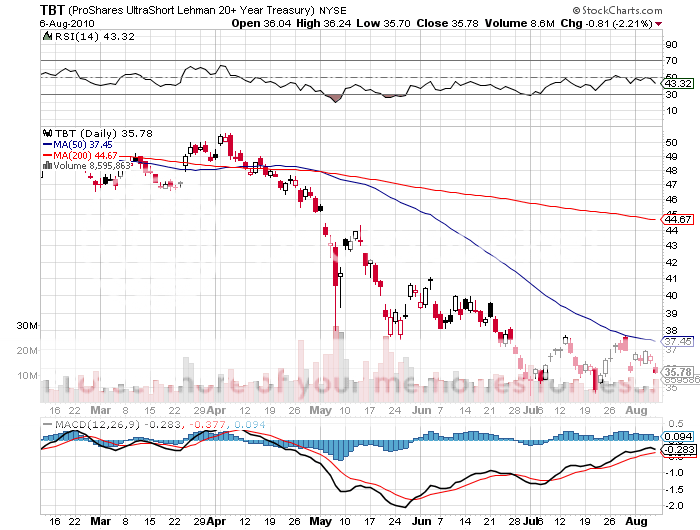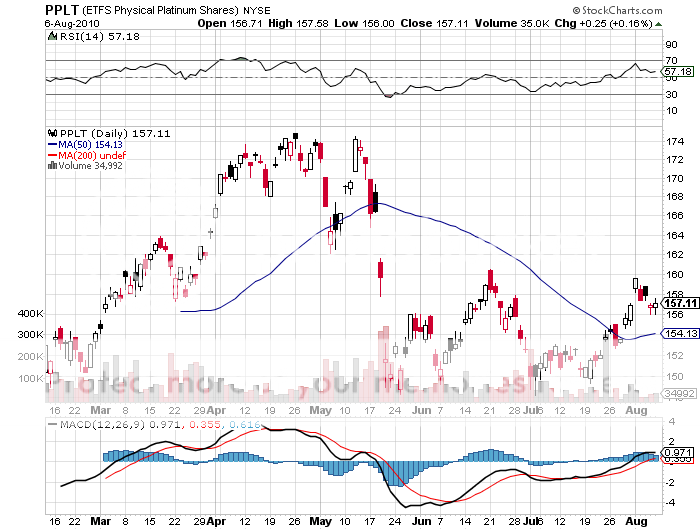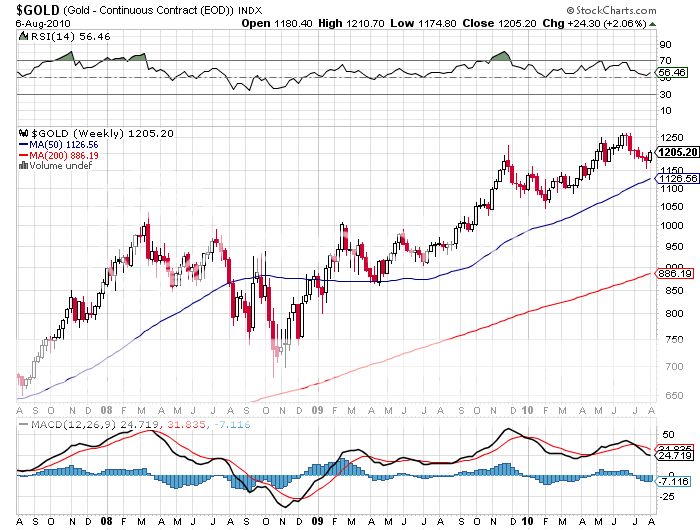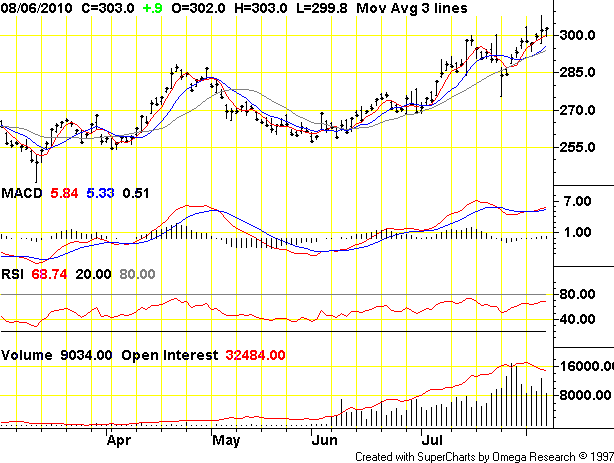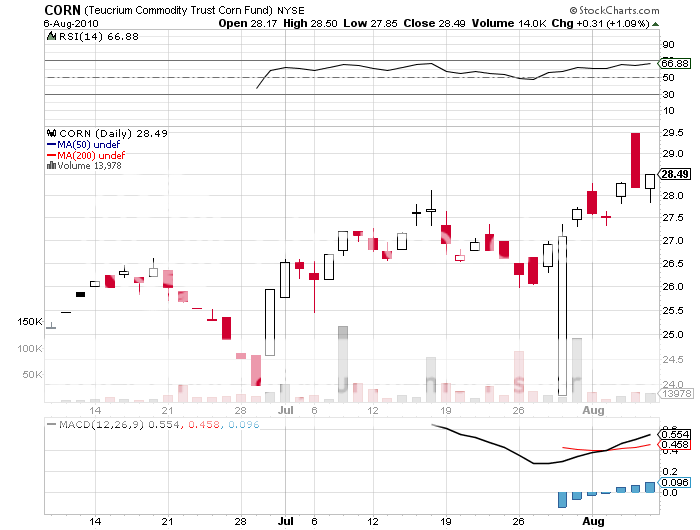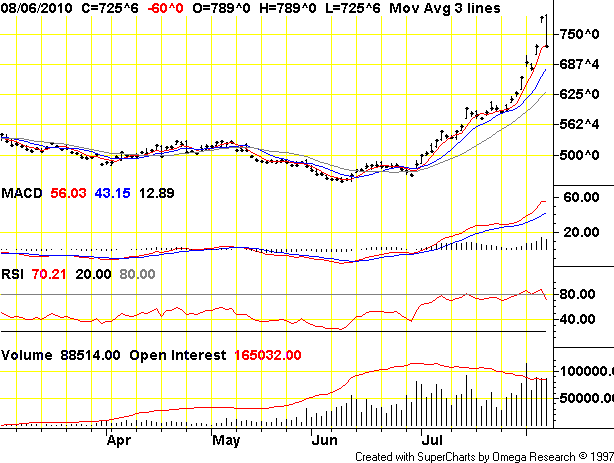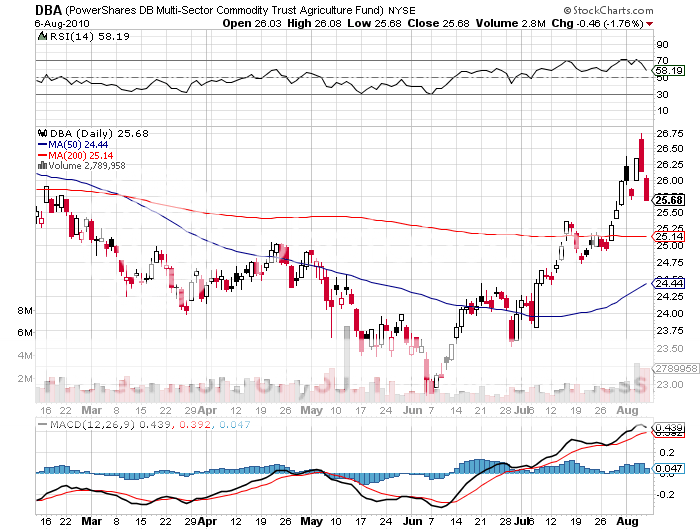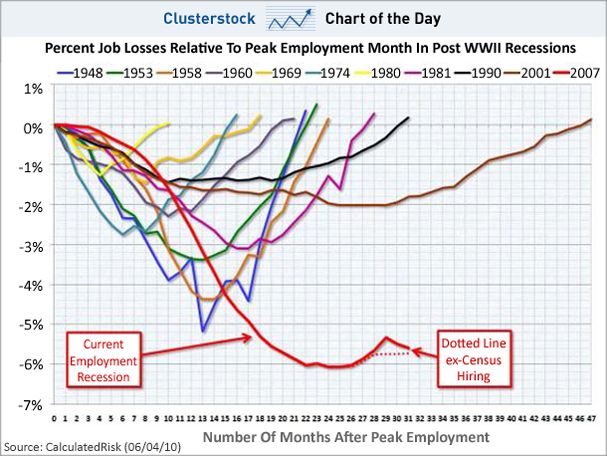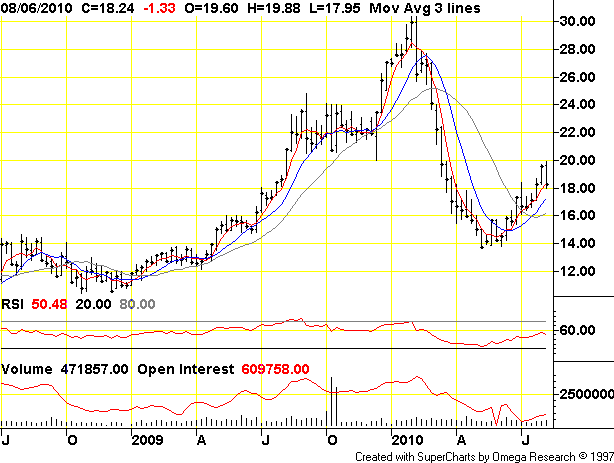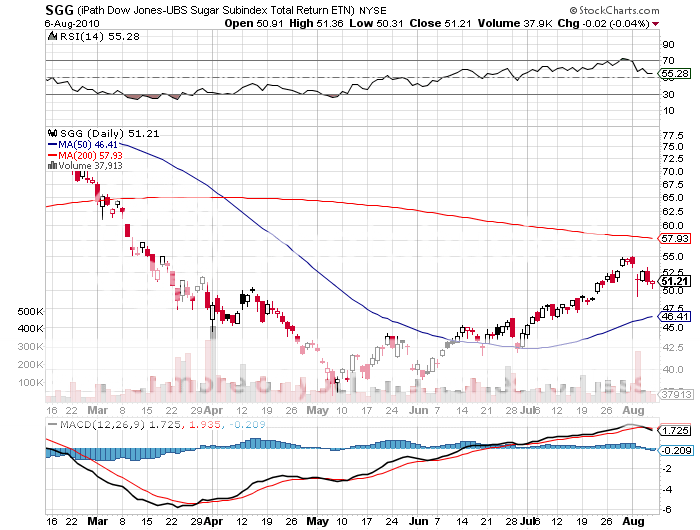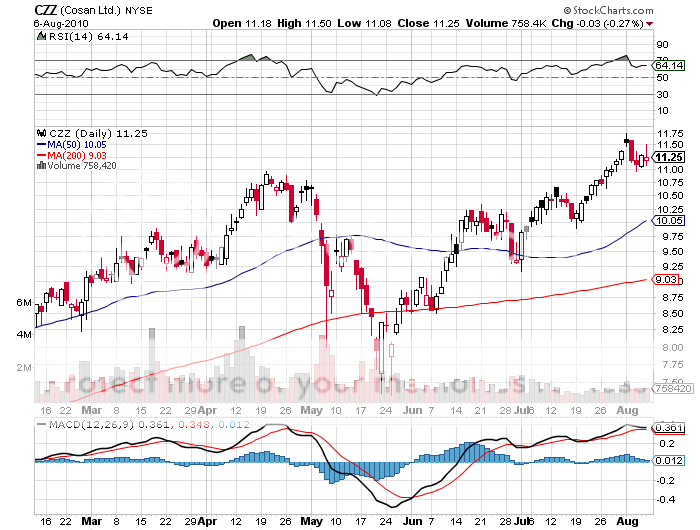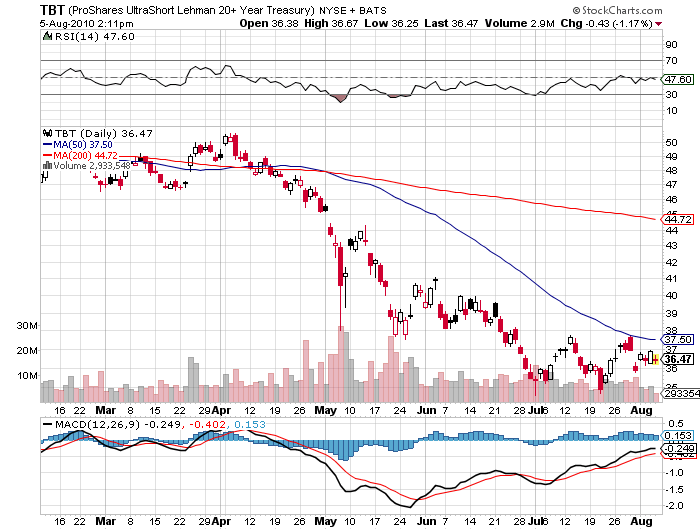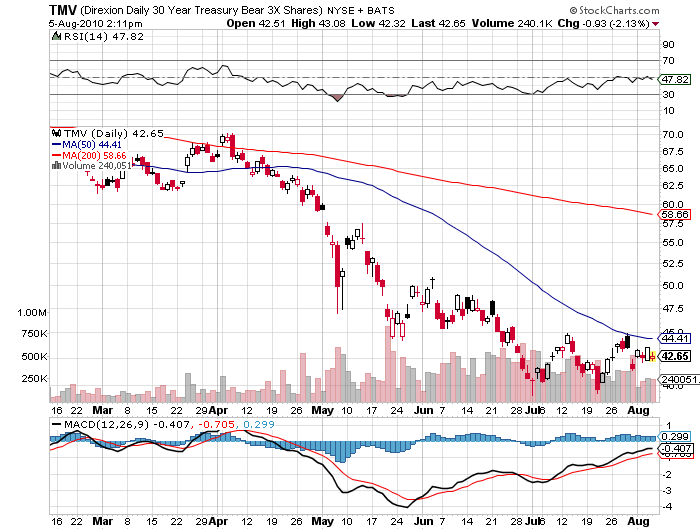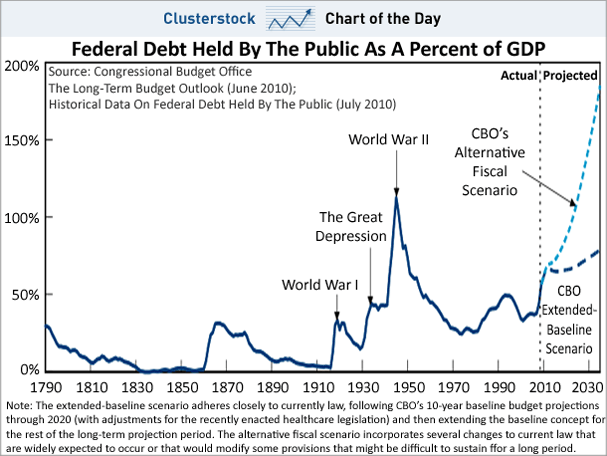
'The biggest trend of 2010 is to see who gets kicked out of the banking system,' said Meredith Whitney, who runs a boutique financial research firm
Featured Trades: (LUNCH WITH THE CIA)
1) Lunch With the CIA. Lunch with the Central Intelligence Agency is always interesting, although five gorillas built like brick shithouses with wires sprouting out of their ears, staring at me intently, didn't help my digestion.
Obama's pick of Leon Panetta as the agency's new director was controversial because he didn't come from an intelligence background- upsetting the career spooks at Langley to no end. But the President thought a resume that included 16 years as the Democratic congressman from Monterey, California, and stints as Clinton's Chief of Staff and OMB Director, was good enough. So when Panetta passed through town on his way home to heavenly Carmel Valley for the holidays, I thought I'd pull a few strings in Washington to catch a private briefing.
The long term outlook for supplies of food, natural resources, and energy is becoming so severe that the CIA is now viewing it as a national security threat. Some one third of emerging market urban populations are poor, or about 1.5 billion souls, and when they get hungry, angry, and politically or religiously inspired, Americans have to worry. This will be music to the ears of the hedge funds that have been stampeding into food, commodities, and energy for the past three weeks. It is also welcome news to George Soros, who has quietly bought up enough agricultural land in Argentina to create his own medium sized country.
Panetta then went on to say that the current monstrous levels of borrowing by the Federal government abroad is also a security issue, especially if foreigners decide to turn the spigot off and put us on a crash diet. I was flabbergasted, not because this is true, but that it is finally understood at the top levels of the administration and is of interest to the intelligence agencies. Toss another hunk of red meat to my legions of carnivorous traders in the (TBT), the leveraged ETF that profits from falling Treasury bond prices!
Job one is to defeat Al Qaida, and the agency has had success in taking out several terrorist leaders in the tribal areas of Pakistan with satellite directed predator drones. The CIA could well win the war in Afghanistan covertly, as they did in the last war there in the eighties, with their stinger missiles supplied to the Taliban for use against the Russians. The next goal is to prevent Al Qaida from retreating to other failed states like Yemen and Somalia. The Agency is also basking in the glow of its discovery of a second uranium processing plant in Iran, sparking international outrage, and finally bringing Europeans to our side with sanctions against Iran.
Cyber warfare is a huge new battlefront. Some 100 countries now have this capability, and they have stolen over $50 billion worth of intellectual property from the US in the past year. As much as I tried to pin Panetta down on who the culprits were, he wouldn't name names, but indirectly hinted that the main hacker-in-chief was China. This comes on the heels of General Wesley Clark's admission that the Chinese cleaned out the web connected mainframes at both the Pentagon and the State Department in 2007. The Bush administration kept the greatest security breach in US history secret to duck a hit in the opinion polls.
I thought Panetta was incredibly frank, telling me as much as he could without those gorillas having to kill me afterwards. I have long been envious of the massive budget that the CIA deploys to research the same global markets that I have for most of my life, believed to amount to $70 billion, but even those figures are top secret. If I could only manage their pension fund with their information with a 2%/20% deal! I might even skip the management fee and go for just the bonus. The possibilities boggle the mind!
Panetta's final piece of advice: don't even think about making a cell phone call in Pakistan. I immediately deleted the high risk numbers from my cell phone address book.
I have been pounding the table with these guys for four decades to focus more on the resource issue, but they only seemed interested in missiles, planes, tanks, subs, and satellites. What a long strange trip it's been. Better take another look on any dip at the Market Vectors agricultural ETF (DBA), their agribusiness ETF (MOO), as well as my favorite ag stocks, Monsanto (MON), Mosaic (MOS), Potash (POT), and Agrium (AGU). Accidents are about to happen in their favor.
Featured Trades: (PLATINUM), (PPLT)
ETFS Physical Platinum ETF
2) Time for Platinum to Play Catch Up. Since you've recently been romancing gold, you should check out platinum, her younger, racier, and better looking sister, who wears the low riders. The white metal historically has more volatility than gold, but this year has risen by only 6.2%, compared to a 9.5% gain for the barbaric relic. No doubt the 'double dip' threat to the economy is having an impact.
While gold is just shy of its all time high, Pt has to rise a further 50% from here just to match its 2008 high of $2,200, suggesting that some catch up play is in order. I have always been puzzled by the fact that platinum is 30 times more rare than gold, but at $1,572 an ounce, trades at a mere 30.4% premium to the barbaric metal. And unlike gold, platinum has actual uses.
You have to refine a staggering 10 tons of ore to come up with a single ounce of platinum. The bulk of the world's 210 tons in annual production comes from only four large mines, 80% of it in South Africa, and another 10% in the old Soviet Union. All of these mines peaked in the seventies and eighties, and have been on a downward slide since then.
That overdependence could lead to sudden and dramatic price spikes if any of these are taken out by unexpected floods, strikes, or political unrest. While no gold is consumed, 50% of platinum production is soaked up by industrial demand, mostly by the auto industry for catalytic converters. Recently, no lesser authority than Jim Lentz, the CEO of Toyota Motors Sales, USA, told me he expects the American car market to recover from the current 12 million units to 15-16 million units by 2015. That's a lot of catalytic converters. That assumes that 14.5 million cars a year are scrapped, requiring almost no new net demand. Surprises will be to the upside.
Jewelry demand for platinum, 95% of which comes from Japan, is also strong, as the global pandemic of gold fever spreads to other precious metals. You can trade Platinum futures on the New York Mercantile Exchange, where a margin requirement of only $6,075 for one contract gets you exposure to 50 ounces of platinum worth $78,600, giving you 12:1 leverage. For those who like to get physical, the US mint issued Platinum eagles from 1997-2008 in nominal denominations of $100 (one ounce), $50 (? ounce), $25 (1/4 ounce) and $10 (1/10th ounce) denominations. Stock traders should look at the ETF (PPLT).
'There are people who can't get used to the idea that the country is being run by a black guy living in public housing. Obama is only half black, so I guess that makes him our 'starter Negro,' said political commentator Will Durst.
(SPECIAL FOOD ISSUE)
Featured Trades: (CORN), (WHEAT), (SOYBEANS),
(POT), (MOS), (AGU)
Teucrium Agricultural Trust Corn Fund
PowerShares DB Multisector Commodity Trust Agriculture ETF
1) My Best Trade of the Year. I was having a good 2010 until the grain trade came along. Now I'm have a fabulous year. Since my initial call to buy on June 24 (click here for the piece), soybean meal has risen by 15%, Corn (CORN) has jumped by 25%, and wheat has rocketed by a mind boggling 100%. The fertilizer stocks of Potash (POT), Mosaic (MOS), and Agrium (AGU) have done just as well. Even the sleepy ag ETF (DBA) has done great. Believe me, I have paid my dues in this market I probably put out more data on agricultural products than a macro newsletter, with the obvious exception of Dennis Gartman's heroic effort in The Gartman Letter. I'm sure that most of this work goes for naught, as these commodities are so far off the radar, that most readers quickly skip over it in search of the truly juicy stuff. After all, wheat does not have a PE multiple, a book value, or pay a dividend. But there are times when ags work and nothing else does. Finally, all those hours speaking to Agricultural Coop mangers in Kansas, analyzing weather models, and visits the docks in Benicia to check on grain loadings to China have paid off. The futures give you great leverage, and as we have seen in recent weeks, truckloads of volatility. A tip off from an ex-KGB friend in Russia that conditions were far worse than the media and the trade rags were hinting at also helped (click here for the piece). The truly amazing thing about this year is that domestic grain traders, seeing nothing but rows of corn, wheat, and soybeans at home as far as the eye could see, were caught totally flat-footed. Much of the buying that took us limit up in wheat the last few days was panicked short covering by desperate locals. This crop disaster was totally foreign in its original. I first spotted trouble with the canola crop in Canada. It then rippled from there to Australia, Western China, the Ukraine, and then to Russia, big time. My strategy is the same every year. Just wait for the market to price in perfection, buy it, and wait for the weather to turn bad, which it inevitably does. Who are the big winners in this mess? Not you or me, but American farmers, who stand to make a bundle selling to a starving world at prices double from when they planted. Oh, and by the way, I stopped out of my wheat on Friday, August 6th. A double is better than a poke in the eye with a sharp stick, especially when returns everywhere else are so miniscule. And, as any farmer will tell you, pigs get slaughtered.
Featured Trades: (JULY NONFARM PAYROLL)
1) Job Creation is Still on Vacation. If I have learned one thing from 40 years in the financial markets, it's that traders demand instant gratification. So when the July nonfarm payroll showed a loss of 131,000 jobs, an unchanged unemployment rate at 9.5%, and total unemployment of 14.6 million, you can count on them to head for the exits.
You can blame the government, as usual, which chopped 202,000 jobs, including 143,000 census workers. The state and local governments are emerging as a big problem, which cut 50,000 jobs, including 38,000 teachers, and are shoveling money out of the economy faster than the feds can shovel it in. Just when our leaders are pointing to education as our economic salvation, we are packing 45 kids into classrooms with broken computers, missing textbooks, and depleted teaching supplies. Should I be surprised that the girl in my local FedEx office doesn't know that Tokyo is in Japan?
The scary thing is that the drag from the states and municipalities is a long term structural issue that has only made a few halting baby steps towards solution. In terms of management efficiencies and pension benefits, they are about where corporations were in 1980. Decades of cutting and reorganization are ahead of them. Some analysts see 250,000 in further cuts from them just in the next 18 months.
Of course companies don't want to hire in front of a diminished long term GDP growth rate of 2% which I have been advertising ad nauseum in these pages.? Just emerging from the near death experience of the century, they will only hire a few temps which they can jettison at the first sign of trouble. What's the point of ramping up production when there are no new customers? This is why we saw a pitifully small increase in private sector jobs from 31,000 in June to 71,000. Forget about uncertainty. That is the political red herring of this election year.
I think we are suffering from permanent unemployment at the current levels, much like Germany saw in the eighties and nineties. If you are out of this economy, you are out for good, not exactly inspirational news for business. There is nothing either political party can do about this but blame each other, which we will hear a lot of in coming months.
My pet solution is for the government to borrow $1 trillion for ten years at the current, impossibly low interest rate of 2.88% and rebuild our entire aging, dilapidated interstate system. When I drive across the Oakland Bay Bridge into San Francisco it is a little disconcerting to see the blue water below shimmering through the cracks in the road. Using conventional multipliers, this would create 35 million jobs heavily weighted at the blue collar end of the skill spectrum where we need them the most. These jobs can't be exported to China, and all 50 states will be in for some serious dosh.
This is an easy, efficient way to solve our employment nightmare. It is affordable, as it would only add $28.8 billion to our budget deficit, mere pocket change these days.? I therefore don't ever expect the idea to see the light of day.
Featured Trades: (SUGAR), (SGG), (CZZ),
iPath Dow Jones-UBS Sugar Subindex Total Return ETN
3) I'll Take Two Lumps, Please. It's just a matter of time before global buying of the grains spills over into the sugar market. A combination of torrential rains in Brazil, the source of 54% of the world supply, and draughts in India, sent prices to a 35 year high of $31 cents a pound last year.
Since then, prices plunged by 52% to 14 cents on rumors of new bumper crops, making sugar the world's worst performing asset. But new shortages are looming on the horizon. It's raining again in Brazil, causing a major shipping bottleneck. Thailand, the world's second largest exporter, will flip to a net importer. Blasting heat in Europe is killing off a large part of the sugar beet crop there.
The International Sugar Organization says that global supplies are at a 30 year low, while the US Department of Agriculture claims our stockpiles are at a 40 year nadir. Major consumers, like the soft drink and food industries, are already marking up product prices. To top it all, China is developing a sweet tooth, a rising standard of living enabling them to increase their own consumption of richer, higher calorie foods.
When I get involved in this commodity, I do so through the sugar contract on ICE or NYBOT. There is also an exchanged traded note for sugar to look at (SGG). Equity investors should study Cosan ADR's (CZZ), Brazil's top cane producer. While it's clear that the train has already left the station, we're already back up to 20 cents a pound, it is something to entertain on dips. It certainly beats the hell out of buying ten year treasury bonds at a ridiculous 2.88% yield.
Featured Trades: (HIROSHIMA ANNIVERSARY)
4) A Hiroshima Memorial. Friday was the 65th anniversary of the Hiroshima atomic bomb, an event that that has touched me in many ways.
I never had any doubt for the need to use the bomb in 1945. My father had orders to join his third marine division in Okinawa for the invasion of Japan when it was dropped. If the plan had gone ahead, I would not be writing this letter today. My biochemistry major and math minor at UCLA landed me a summer job as a research assistant at the Nevada nuclear test site in the late sixties where I got to know the men who worked with Dr. Robert Oppenheimer to build the bomb. There, 'yields' meant millions killed, not interest paid.
When I first landed in Japan, I made a beeline straight to the Atomic Bomb Victims Hospital to interview survivors 30 years after the attack. I listened to stories about people vaporized, but whose image was etched into solid granite, and the rivers that were choked with countless bodies. Textile patterns were permanently burned into human skin, the light colors reflecting radiation, while dark ones absorbed it. Some 50 of the city's 150 doctors were killed instantly, and the rest were seriously injured. They were futilely left to treat gamma rays and beta particles with only mercurochrome, or traditional Japanese folk remedies like moxabustion. Tens of thousands showed up at hospitals with no visible injuries, only to die agonizing deaths within the day.
Two weeks after the bomb, everyone's hair started falling out and immense welts called keloid tumors appeared, classic symptoms of then unknown radiation poisoning. American scientists descended on the city by the hundreds measuring every imaginable parameter with grim precision, such as the heat at ground zero that reached an unbelievable 6,000 degrees, and the melting of ceramic roof tiles to a radius of 1,300 yards. They told the Japanese that no one could live there for 20,000 years. The residents ignored them and moved back in to rebuild as soon as the fires abated.
I met one spry Japanese American woman who grew up in Fresno, California and spoke perfect 1930's English, but was sent home to Hiroshima to avoid the war. I'll never forget the massive scars on her forearms where her summer yukata cut off. A barking dog caused her to briefly look away from the curious descending parachute from a lone B-29 overhead, thus saving her face and her eyesight. Her three young children didn't make it.
For me the experience converted an interesting physics experiment into the greatest source of human misery of all time. As the years went on I met many more Hiroshima survivors, known as bakusha, who after a third shot of Suntory whiskey would talk about the artificial weather the bomb created, the gale force winds and the black rain. Every type of plant strangely flourished after the bomb, but men and women were left sterile, and birth defects skyrocketed. In later years I attended memorial ceremonies where 140,000 candlelit paper boats were placed in the Motoyasu River at night to symbolize the lost souls.
Ironically, those who survived the bomb now have the greatest lifespan of any group in Japan. I guess that if you can survive an atomic bomb, you can handle anything. I'm sure free health care for life and pensions helped too. There was also that one dose of radiation treatment, courtesy of the US government.
Today Hiroshima is a major focus of international pacifist and disarmament groups. The effort is being led in the US by former secretary of state, George Schultz, who has played a key role in cutting American nuclear stockpiles by 75% to 5,113 today. Some 20% of America's nuclear power is currently generated by plutonium from recycled warheads from the former Soviet Union.
You can learn more about his efforts by visiting the Plowshares Fund at http://www.ploughshares.org/ .To buy John Hersey's Pulitzer Prize winning Hiroshima, which describes the doomed city immediately after the attack in all its horrific detail, please click here. It is not a light summer beach read, but is enlightening and sobering.
'There is no fuel left in the tank' said Carter Worth, a technical analyst about the likely failure of the stock market rally.
Featured Trades: (THE SACK OF ROME), (TBT), (TMV)
ProShares Ultra Short Lehman 20+ Year Treasury ETF
Direxion Daily 30 Year Treasury Bear 3X Shares ETF
1) Get Ready for the Sack of Rome. I traded the great Japanese bull market during the eighties at Morgan Stanley, from the very bottom all the way up to the peak. The firm's fundamental analysts railed against the tide for years, claiming that stocks were liquidity driven, overvalued, and headed for a huge fall. Every time they made that call, their offices got moved ever closer to the elevator, and eventually, the men's bathroom. When the turn finally came, I had already taken off on an extended vacation, and the ignored analysts had moved on to hedge funds, where they proceeded to make vast fortunes. When someone at last threw the switch on Japan, it got dark amazingly fast. Tokyo went out at an all time high of ?39,000 on the last day of 1989, and then dropped a staggering 45% in January. Yesterday's close, 21 years later, was ?9,489. These days, I feel like those Japanese analysts, except the market that is driving me nuts is the one for US Treasury bonds (TBT), (TMV). The more arguments I find that they should fall, the faster they go up (see charts below). I probably would have fired myself by now, if I weren't my own boss, as nepotism is always a powerful force. Now I hear that PIMCO's Mohamed El-Erian says that there is a 25% chance of real deflation hitting the US, after telling us it won't for so long. Again, this reminds me of Japan, where the higher it went, the more imaginative the explanations became as to why it should continue. Ignore those 100 PE multiples, just focus on the damn Q-Ratios! I believe that we are witnessing the final blow off top in the great 30 bull market in bonds. A decade from now, it will not be stock investors complaining about a lost decade, but owners of bonds. Could it go on for another six months or a year? Sure. Like gold in 1979, technology stocks in 2000, the absolute tops of these parabolic moves are impossible to predict, both on a time and price basis. But when the turn comes, it will resemble the Sack of Rome.


